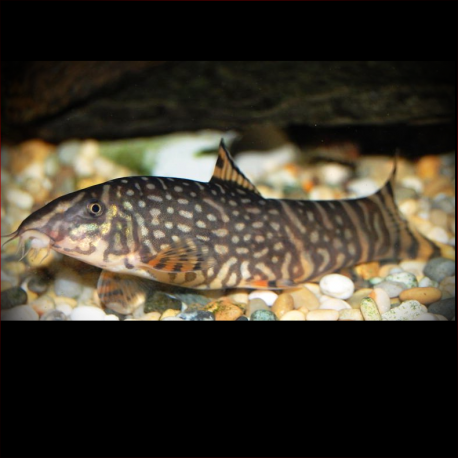More info
Datasheet
| Minimum Tank Size | 270 litres / 71.33 US gallons |
| Maximum Size | 12.0cm / 4.72inches |
| Temperature | 19°C / 66.20°F - 27°C / 80.60°F |
| Hardness | 2.02dgH / 36ppm - 12.05dgH / 215ppm |
| pH | 6.0-7.5 |
Behaviour
Botia species are known to be slow-moving and long-finned, making them unsuitable tankmates for species like ornamental bettas and guppies that may nip at their trailing fins. They are more compatible with peaceful cyprinids and members of specific genera like Barilius, Luciosoma, Balantiocheilos, and Barbonymus. Botia spp. are social creatures that form complex hierarchies, requiring group maintenance of at least 5 or 6 individuals. Behavioral rituals, such as dominance battles and "greying out," have been observed in aquaria, showcasing their social dynamics. Thorough research before selecting tankmates is crucial to prevent issues.
Feeding and Diet
Botia species are predominantly carnivorous but also consume vegetative matter, including soft-leaved aquatic plants. Their diet consists of aquatic molluscs, insects, worms, and invertebrates. In captivity, they should be offered a varied diet comprising quality dried products, live or frozen bloodworm, Tubifex, Artemia, vegetables, and fruits. Chopped earthworm and occasional snails can supplement their protein intake, but they should not be solely relied upon to control snail populations. When acclimated, Botia are bold feeders and readily accept a diverse diet, even rising to midwater during feeding times.
Reproduction & Dimorphism
Breeding Botia species in private aquaria is uncommon, with most specimens available in the hobby being mass-produced using hormones. Commercial breeding has led to hybridization, including crosses between different Botia species. Sexually dimorphic traits include fuller-bodied and round-snouted females, while males possess elongated snouts with fleshier lips. Notably, some species exhibit various color patterns and markings, adding to the challenge of species identification within the Botia genus.
Habitat and Distribution
Botia species are native to riverine habitats with rocky substrates where they congregate in pools and stiller areas. They are commonly found in the river basins of northern India, Bangladesh, and parts of Myanmar. The distribution of species like B. rostrata and B. sp. 'upper Brahmaputra' spans tributaries of the Ganges, Brahmaputra, and various rivers in Assam and Arunachal Pradesh, India. Some forms, like B. sp. 'ladder,' occur sporadically in the aquarium trade, exhibiting unique body patterning. The taxonomic classification of the Botia genus has undergone revisions, leading to a clearer understanding of their evolutionary relationships.

